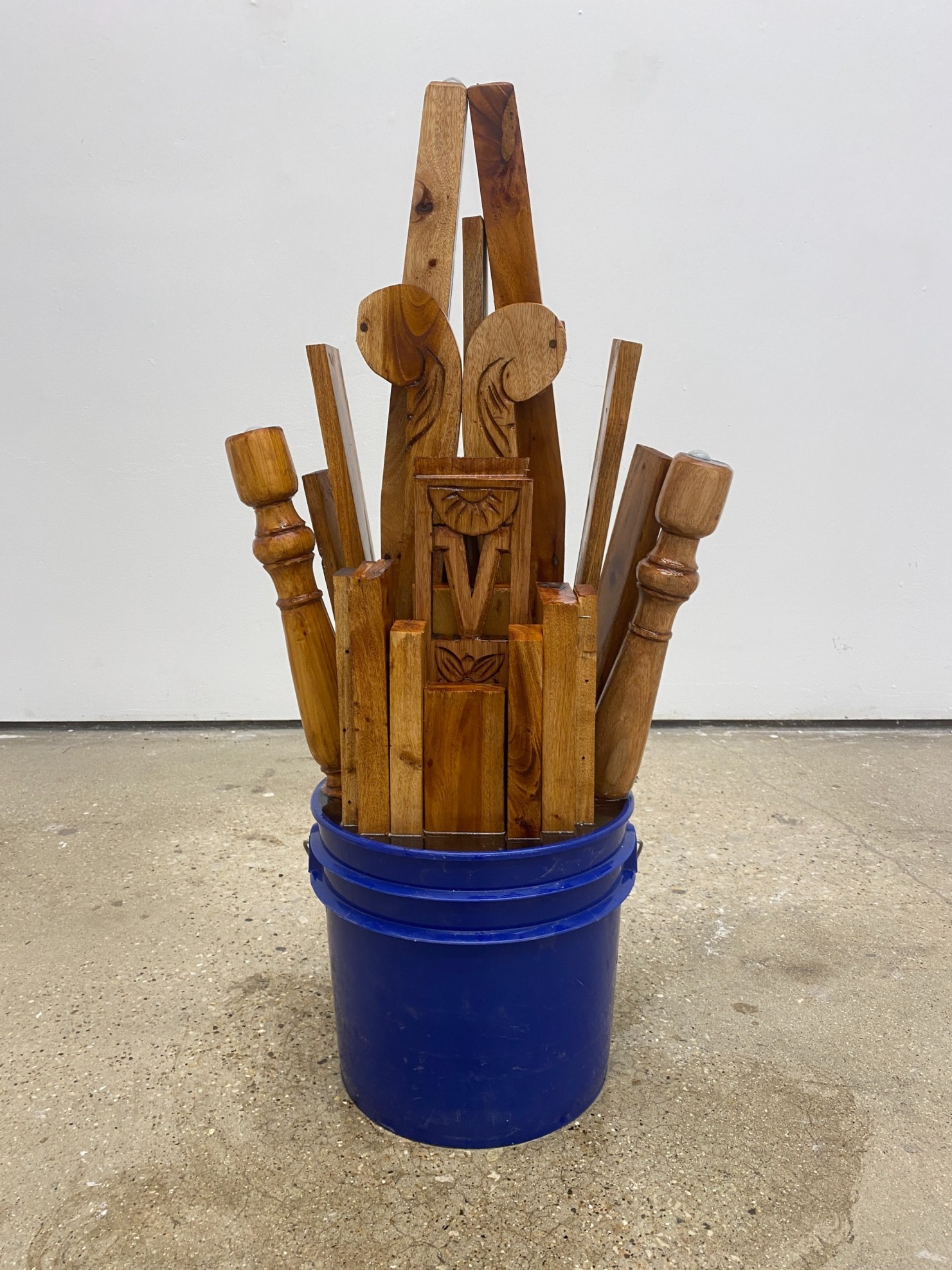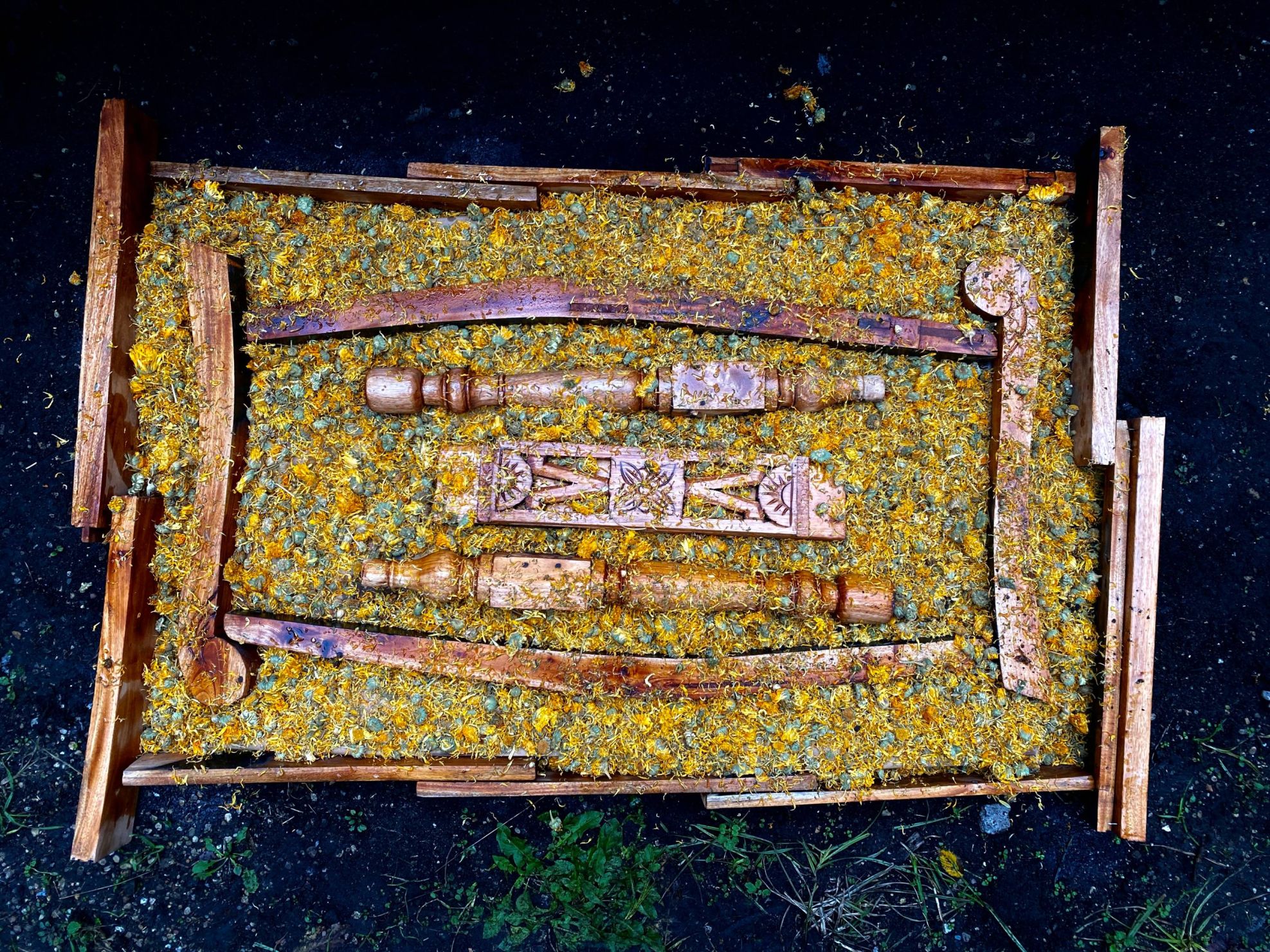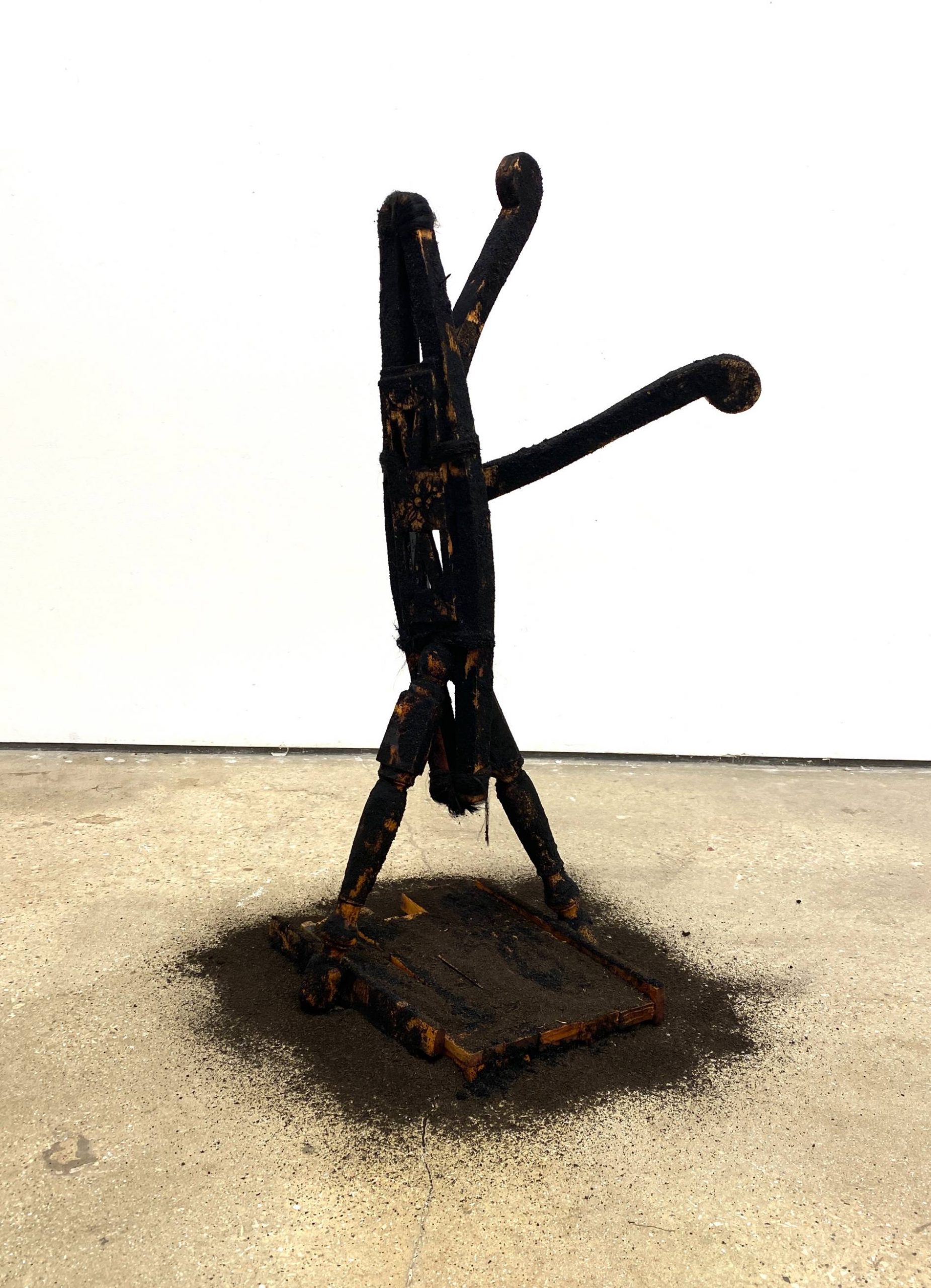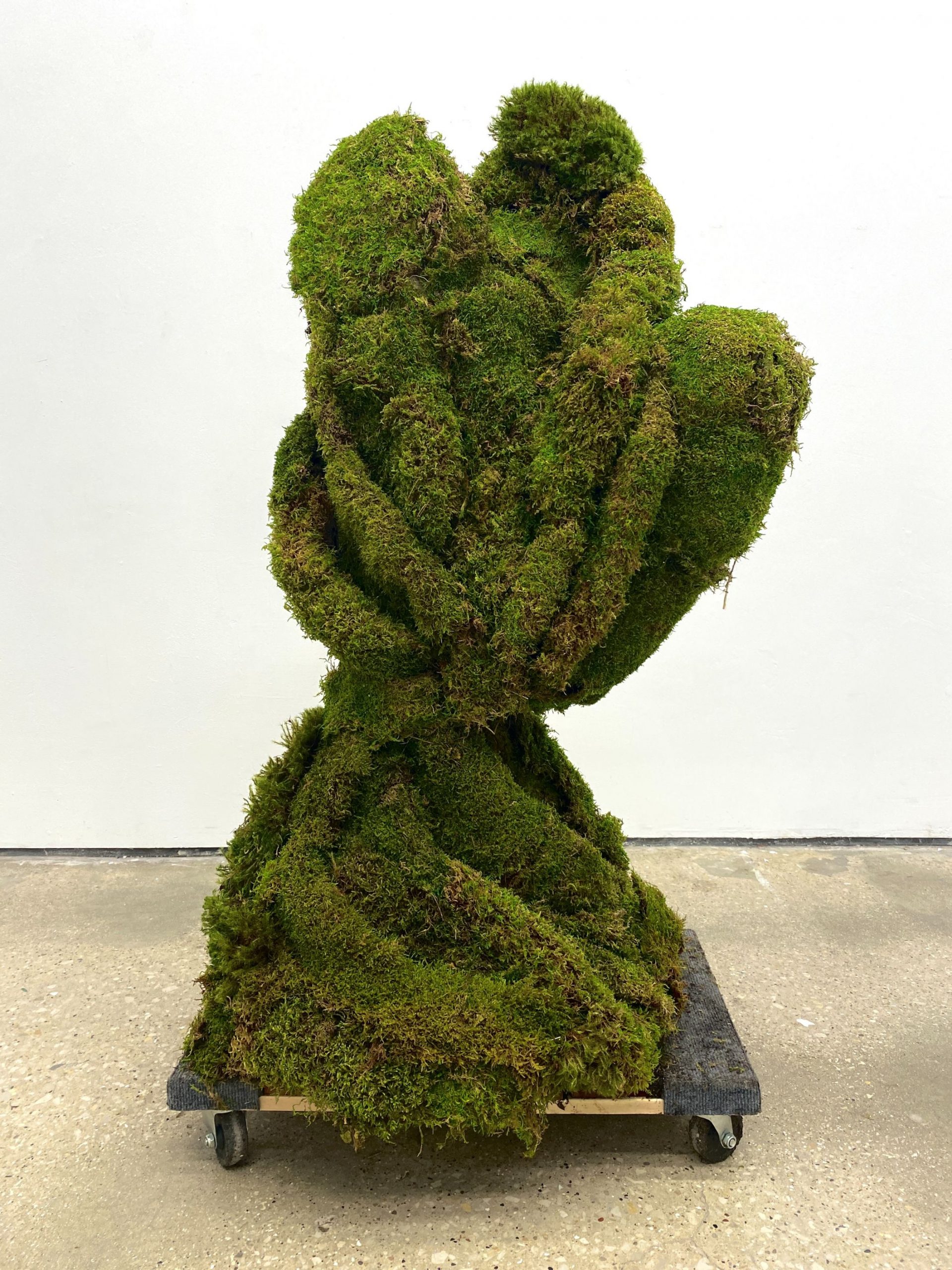Valien is an interdisciplinary artist who focuses on time-based sculptures. Since coming to the United States in 2011 (with a non-resident visa), he has been making art as a way to navigate his assigned identity as an alien. The personal, time-based medium he has developed expresses his existence in a country that, while becoming home, remains foreign. Valien began to pursue a deep interest in the natural sciences, particularly plants, at Bunker Hill Community College, where he graduated with an Associate Degree in Biology. He then transferred to Columbia University, New York, where he completed his Bachelor of Arts. Since that time, he has been investigating the way nature exists in the urban landscape, in part making living sculptures out of disposed furniture as a form of storytelling. He has received the Pritzker Graduate Fellowship, Jack Kent Cooke Graduate Fellowship, and Abakanowicz Fellowship of the Institute for Curatorial Research and Practice.
I make time-based sculptures with disposed furniture as a means of storytelling. By doing so, I explore the savage beauty of life and seek to reconcile the relationship of death and culture through the lens of nature.
I collect wooden furniture from dumpsters and alleys, before it gets thrown away. I am extremely interested in wood as a material because these objects are made by destroying a living thing (a tree) to benefit the life of another living thing (human beings). Its disposal to landfill signifies not only its second death but also its return to nature. I, the artist, serve as the listener to these objects and romanticize their transition from domestic places to the outdoors where their life was first created.
My process is composed of four stages, which I will describe below.
Stage 1. I strip all paint and varnish off the furniture to remove the skin of their previous life, their baggage, and the presence of humans to reveal the raw materials which includes texture and veining. Without protective layers, the objects again become vulnerable to nature.
Stage 2. I detach all parts of the object and submerge them in a bath of mineral oil, then a moonbath under the full moon. The mineral oil heals the violence of the act of stripping. When all the parts are laying flat, the object having gone from 3D to 2D, it makes contact with the earth’s surface, grounding the object body for the healing process. The full moon stimulates the energy of the new beginning and for its new identity.
Stage 3. After contemplating all the parts, I rejoin them to create a new configuration. The structure is strengthened by a coat of worm casting, a rich nutrient made from composting rotten organic materials, to prepare it for the new life it is about to take on. I invest in the art of composting myself and in casting from it a coating for the object, because I appreciate how it beautifies the fact that death can become a fertilizer for other living things.
Stage 4.The new structure is covered in mud and perennial bulbs; it then sleeps over the winter and eventually blooms in spring or summer. The structure becomes an armature for life to emerge. The worm-casting coat attracts roots from these flowers to attach and penetrate into the structure. Perennial flowers bloom according to the shift in climate as spring comes sooner every year. The sculpture serves as a signal of how life on earth is becoming more fragile and disposable as much as the furniture.
It takes me up to a year to make each sculpture. This time allows me to completate its entirety and understand the life of the object, of myself, of the world. In the process the sculpture commands time–the time to realize beauty in death and reveal its truth. Death is a certainty yet at the same time a transitional point.




